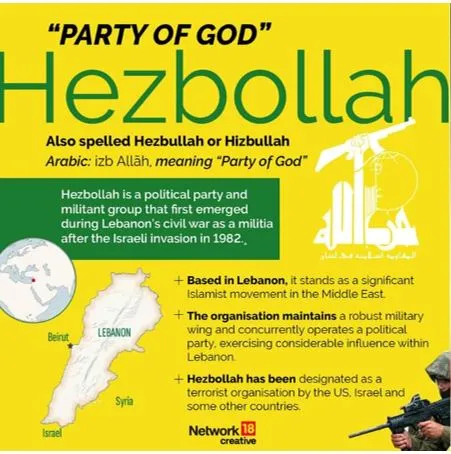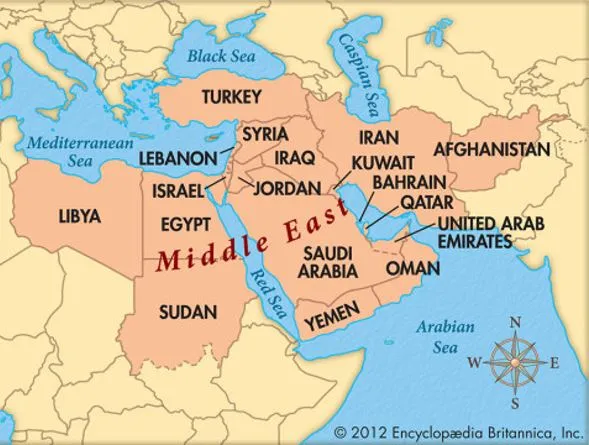

30th September 2024 (11 Topics)
Context
The Middle East is once again under intense scrutiny after the death of its leader Sheikh Hassan Nasrallah. Hezbollah has confirmed the death of its leader, after Israel said it had killed the 64-year-old in an airstrike on Beirut.
What is Hezbollah?
- Hezbollah is a militant group founded in Lebanon in 1982 during the 15-year Lebanese Civil War. It has evolved into a significant political and military force within the country.
- Supported by Iran, Hezbollah aims to resist Israeli presence and influence in the region.
- Its animosity toward Israel has persisted since the latter's occupation of southern Lebanon, which lasted until 2000.
- It is considered a terrorist organization by the U.S. government.
Recent Escalations
- Following Hamas' attack on Israel on October 7, 2024, Hezbollah expressed solidarity with Hamas, leading to increased skirmishes at the Israel-Lebanon border.
- The situation escalated dramatically after Israeli airstrikes targeted Hezbollah assets, marking the deadliest day of conflict in Lebanon since 2006, with significant civilian casualties.
- Hezbollah and Hamas are both supported by Iran. Both groups share a common enemy in Israel.
- Military Capabilities: Hezbollah's military capabilities are noteworthy, with a reported arsenal capable of targeting all regions of Israel. This capability is supported by Iranian military aid.

What is Middle-East Crisis?
- The Middle East is a region marked by instability and complex conflicts affecting many of its countries. Key issues include:
- Destruction in Syria: Ongoing violence has led to widespread devastation.
- Iraq's Challenges: The country is struggling with political fragmentation and violence.
- Unrest in Egypt and Libya: Both nations have experienced significant upheaval and instability.
- Rivalries Among Gulf Monarchies: Tensions between oil-rich nations complicate regional dynamics.
- Relations with Iran: Complicated ties with Iran influence various conflicts and alliances.
- Social Discontent: Widespread dissatisfaction among populations fuels unrest.
- Ethno-sectarian Divisions: Conflicts often exploit divisions based on ethnicity and sect.
- Rise of Jihadism: Extremist groups continue to gain influence.
- S. Policy Confusion: Inconsistent American policies have added to the region's challenges.
- Israeli-Palestinian Conflict: Ongoing disputes between Israel and Palestinians remain a central issue. Israel is currently fighting:
- Gaza Strip
- pockets of the West Bank
- Hezbollah in the north
- Houthi forces in Yemen along the Red Sea and the Islamic Republic
Fact Box: What Is the Middle East?The Middle East is a geographical region primarily located in western Asia, extending into parts of northern Africa and southeastern Europe. Geographical Boundaries
|
More Articles



